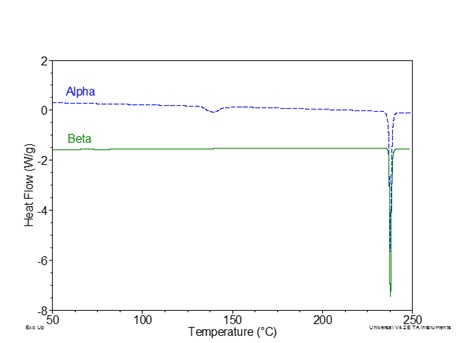By Particle Analytical…
Differential Scanning Calorimetry (DSC)
Differential Scanning Calorimetry (DSC) measures the temperatures and heat flows associated with transitions in materials as a function of time and temperature in a controlled atmosphere. The instrument applied by Particle Analytical is a Mettler DSC 823e Differential Scanning Calorimeter. The operation range is from -65 to 700 °C with heating rates up to 20 °C/min.
The principle is that a small amount of sample is heated – and if any kind of transition takes place during this process, it will lead to a slight temperature difference between the sample and a reference sample. Differential scanning calorimetry measures the amount of energy (heat) absorbed or released by a sample as it is heated, cooled, or held at a constant temperature.
By measuring the difference in heat flow between the sample and reference, differential scanning calorimeters are able to measure the amount of heat absorbed or released during transitions as melting and crystallization. DSC may also be used to observe more subtle physical changes, such as glass transitions. Differential scanning calorimetry is highly relevant in order to:
-
- Determine melting point, for instance as an ID method
- Examine the stability of the compound, as transitions or melting at low temperature is not desirable
- Evaluate the relative stability of different crystalline forms in order to avoid transitions between different crystal forms
- Batch comparison: Differences in energies upon melting might be due to impurities or content of amorphous material and the results might be used for regulatory purposes
- Determine glass transitions: A reversible change of the amorphous region from rubbery condition to a harder and more brittle one. Glass transition temperature is highly relevant for amorphous material as it is a valuable indicator of stability
- Determine crystallinity/purity: Only crystalline material has a melting endotherm, i.e. a temperature where the lattice breaks down. If a material contains amorphous material – or other impurities, it will lead to a lowering of the melting point + a reduction in the melting enthalpy


















